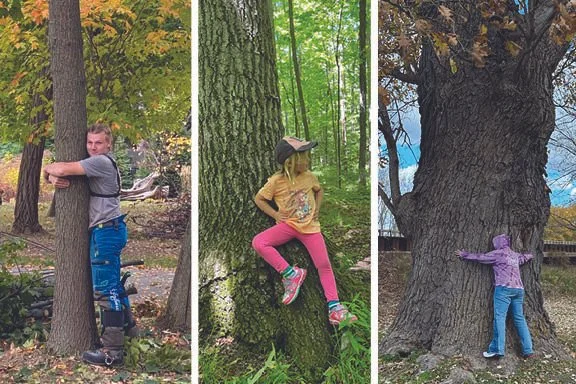Fungal & Foliar Disease Management
Clues are in the Canopy! Fungal and leaf diseases can vary from unsightly yet harmless, to difficult to see and detrimental. Our Certified Arborists and Plant Health Care specialist are adept at identifying the issues. We provide targeted applications to break the disease cycle and create more robust trees.
-
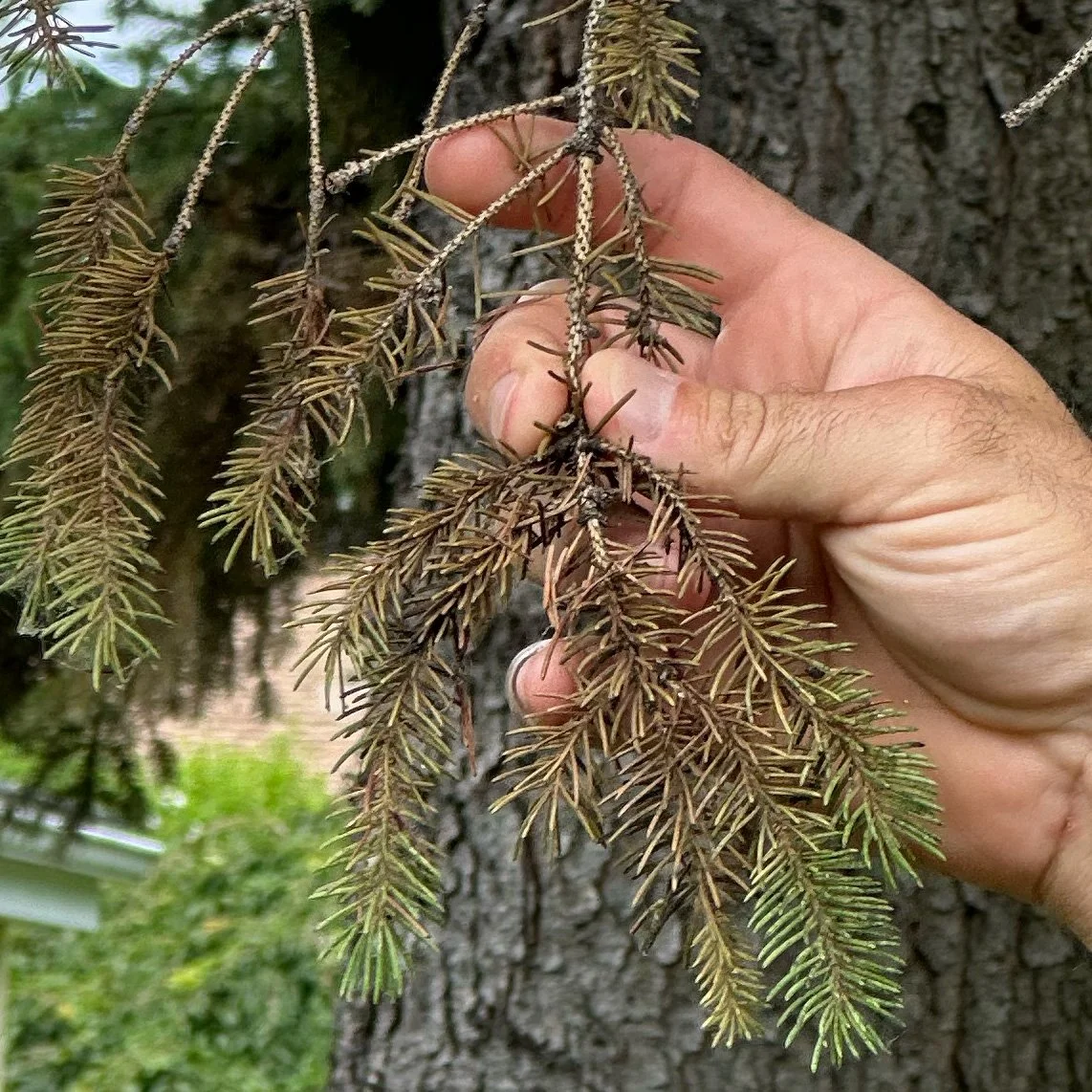
Needle Cast
If there are Colorado Blue Spruce trees in your area, there’s a very good probability you’ve seen Needle Cast (Rhizosphaera) at work. A fungal disease affecting coniferous trees, needles discolor, turning orange/brown and dropping. Die-back happens over a year so we often see fresh, healthy needle growth in the Spring on the “outside” edges of the canopy, with dying or dead needles just behind it. This results in the tree appearing skeletonized back to the trunk.
The best treatment for infected trees is yearly fungicide sprays, however some spruce and pines are less susceptible and, if overall healthier with good soil, water, and placement, will resist the fungus. Ask our team about what evergreens are top choices for our region.
-
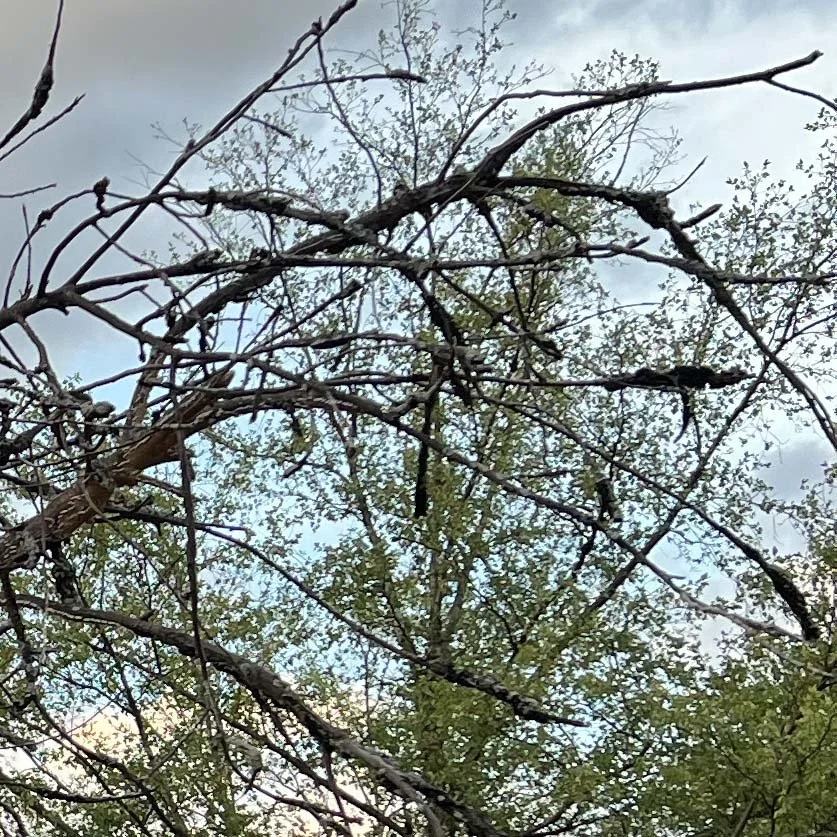
Black Knot
A fungal disease that causes galls, bulbous black or dark brown growths in trees. Carried by wind, this disease can be prolific in a community. Treatment includes pruning and fungicide treatments to remove and prevent the fungal infection in susceptible trees like cherries and plums.
Our Compost Tea™ soil amendment can help bolster a tree’s ability to fight off the spread of infection. (Learn more about Compost Tea™)
-

Powdery Mildew
Appearing white and powdery on exposed leaves, this mildew can be problematic for weak or susceptible trees and plants throughout yards and landscaping.
Proper pruning for air circulation, removal of infected leaves after leaf drop, and in some cases fungicide treatments, are go-to control methods.
-

Tar Spot
Sycamore trees and maple trees of any variety often have unsightly black or dark brown spots across their leaves, appears from late Spring to Fall. While not pretty, this fungus is generally harmless, considered a cosmetic issue to a mature and otherwise healthy tree. The fungus will overwinter in infected leaves.
Like Powdery Mildew, proper pruning for air-circulation and clearing out infected leaves after leaf drop are good preventative measures for preventing re-occurrence in the Spring.
-
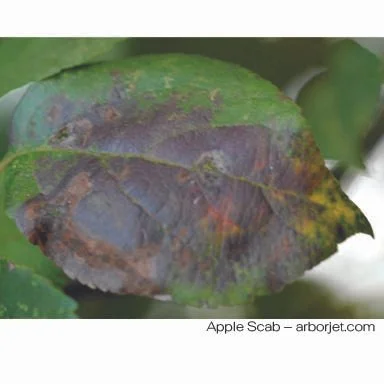
Apple Scab
This fungal disease is commonly seen in our Finger Lakes/Rochester regions not only on trees growing fruit for human consumption, but on crabapple and even pear trees. Dark green or brown spots appear on leaves (and fruit) growing larger, often spreading through the entire canopy. Like many fungi, the venturia inaequalis fungus overwinters on infected leaves, re-sporing during the Spring months. We see it spread most rapidly in cool and wet weather. Cultural practices of removing fallen leaves and employing proper pruning for improved air circulation can help manage this issue. Treatments can include improved overall health and specific fungicides.
-

Galls
Galls, swelling / abnormal growth on leaves, twigs, trunks, or roots of a tree (or plants), appearing as balls, lumps, spikes, stippling, or other physical abnormalities, and ranging from green to red to brown, smooth to textured.
Galls can form in response to feeding activities of various insects, mites, or in response to certain bacteria or fungi. They can form on all parts of the tree, though are most often noticed on leaves or branches. Gall formation is induced in response to the chemicals released by the pest or pathogen and are essentially the tree’s way of protecting itself and trying to prevent further damage.
While unsightly, typically galls are not fatal with some following the natural ebb and flow of pest population levels (so what’s a serious infestation one year, might be minimal the next). There are some systemic treatment options for certain gall creating pests and pathogens (sprays tend to be ineffective). Be sure to check with an Arborist to determine if treatment is recommended.
-

Unusual Growth
Waterspouts are vertical shoots often growing from dormant buds on the trees branches.
Sucker growth emerges from the tree’s root system or trunk.
In both cases the new growth is small, weakly attached, and diverts the tree’s energy and nutrients away from healthy growth. They are often an emergency response by the tree to a range of stressors. Biologically the tree’s system is engaging this survival strategy to bring nutrient levels back up and regain overall health.
As indicators of a health issue, it’s advisable to have a Certified Arborist evaluate a tree showing unusual growth of any sort
-
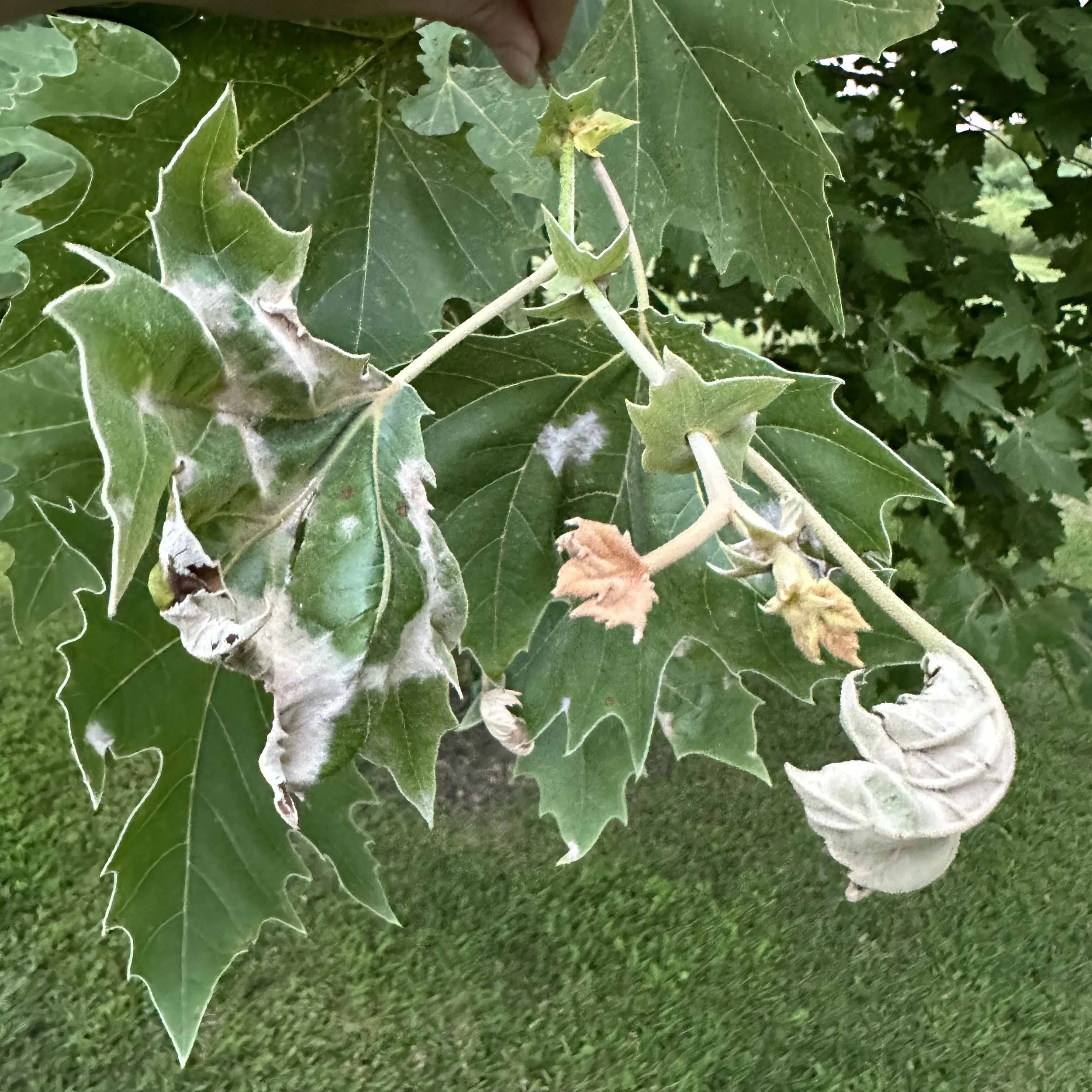
Other Issues
Premature leaf drop, dieback, wilting, drooping, curling, discoloration, spots, patches, coatings, holes and texture changes – the tree’s canopy is always giving us information. Scorching, fungus, bacterias, soil issues, and pest issues all impact trees.
In our Finger Lakes and surrounding region, we commonly experience wet and humid conditions, especially with seasonal changes. This creates a breeding ground for fungal, foliar, and bacterial issues.
Anthracnose, caused by fungus, shows its impact through symptoms that include many of the leaf issues above (spots, twig dieback, premature leaf drop, etc). Often cosmetic, when the tree suffers annually, or the fungal infection is severe, it can cause a tree to die.
We’re passionate about tree care and protecting your tree’s long-term vitality for this generation and the future.
Our Arborists specialize in diagnosing and treating tree diseases, pests, and ailments. Connect with us today.
Need assistance?
Contact our team of professional Arborists to get additional information and request a quote:

